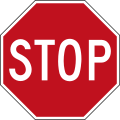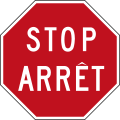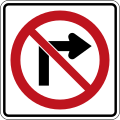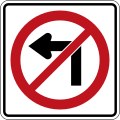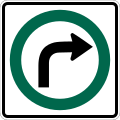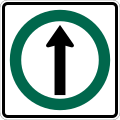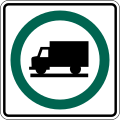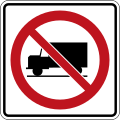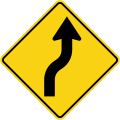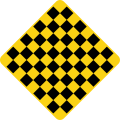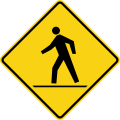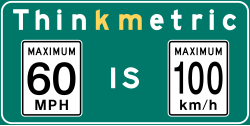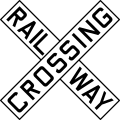This article needs additional citations for verification .(February 2015) |
Road signs in Canada may conform to the Manual of Uniform Traffic Control Devices for Canada (MUTCDC) [1] [2] by the Transportation Association of Canada (TAC) [3] for use by Canadian jurisdictions. Although it serves a similar role to the MUTCD from the US Federal Highway Administration, it has been independently developed and has a number of key differences with its American counterpart, most notably the inclusion of bilingual (English/French) signage for jurisdictions such as New Brunswick with significant francophone populations, as well as a heavier reliance on symbols rather than text legends.
Contents
- Language
- Stop sign
- Canadian road signs
- Gallery of stop signs
- Gallery of other signs
- British Columbia road signs
- New Brunswick road signs
- Ontario road signs
- Sign classification
- Examples of Ontario regulatory and warning road signs
- Quebec road signs
- Quebec gallery
- Retired signs
- See also
- References
- External links



